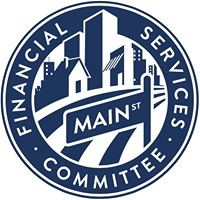Examining the Availability vs. Reliability of Insurance for Non-Profit Organizations
WASHINGTON – (RealEstateRama) — The Subcommittee on Housing and Insurance held a hearing to examine insurance for non-profit organizations. The purpose of this hearing was to evaluate the availability of property insurance coverage for non-profit organizations and address whether Risk Retention Groups (RRGs) should be granted the authority to offer property and auto coverage.

“The input from this subcommittee hearing was an important opportunity to hear opinions about whether or not we change the rules expanding from liability to property coverage for non-profits,” said Subcommittee Chairman Sean Duffy (R-WI).
Topline Quotes from Witnesses
“The fundamental questions surrounding potential Liability Risk Retention Act (LRRA) expansion are essentially the same as those addressed by Congress when the first act was passed in 1981, and when it was expanded in 1986. Stripping away jargon, this question can be phrased as an issue of availability versus reliability.” Baird Webel, Specialist in Financial Economics, Congressional Research Service
“The unavailability of standalone property insurance for nonprofits is not related to a general shortage in property insurance capacity. Instead the Nonprofit Property Protection Act is about a specific type of coverage—standalone property policies for small 501(c)(3) nonprofits—that is simply not available from commercial insurers. This is because the standard practice of commercial insurance companies is to only offer property insurance combined with liability insurance as a bundled package for 501(c)(3) nonprofit clients. This prevents 501(c)(3) nonprofits, that obtain specialized liability insurance and loss prevention services from their Risk Retention Groups (RRGs), from finding satisfactory standalone property policies in the commercial market.” Pamela E. Davis, Founder and CEO, Nonprofits Insurance Alliance Group
“Given their relatively small capacity, a RRG could be at greater risk of insolvency following a large loss event or catastrophe. If this occurred, it would leave policyholders without financial support at the very time they need it most. This outcome would be particularly acute for nonprofit organizations at a time when their constituents and communities would need them most. Therefore, concerns about the capital adequacy and financial solvency regulations must be addressed before any expansion of commercial writing by RRGs can be entertained.” Tom Santos, Vice President, Federal Affairs, American Insurance Association
“Most nonprofits I work with have limited operating funds and are receiving some or all of their funding from state, federal or local government. A nonprofit entrusted with the tax-payer’s money should not have to spend an unnecessary high amount on insurance. That undue expense in turn negatively impacts the amount of services they can provide to their communities. By allowing an RRG the ability to provide property insurance, the nonprofit will receive more competitive pricing from all of the insurance options that are available and still be able to benefit from the specialized coverages and services they value.” Kevin Cothron, President, Southeast Nonprofit Insurance Programs




